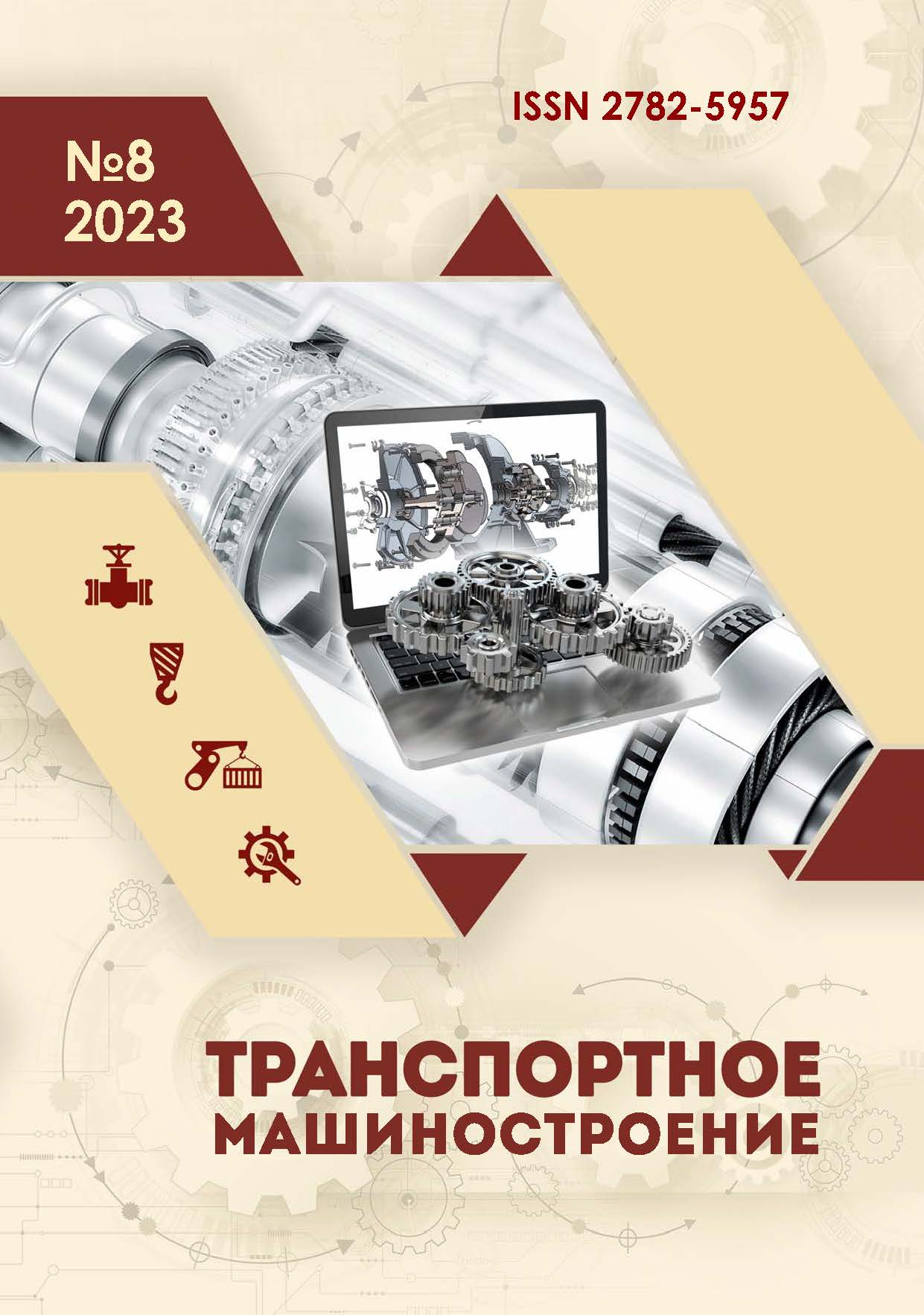Moscow, Moscow, Russian Federation
Moscow, Moscow, Russian Federation
UDC 629.463.32
Russian Library and Bibliographic Classification 392
The study objective is to simulate the breakdown of a tank car boiler by safety arc, taking into account the material plasticity. In accordance with this, it is necessary to solve the following tasks: to develop a methodology for calculating the stress-strain state of the boiler under shock load in a nonlinear situation, to select rational geometric characteristics of the armor plate and its thickness. To achieve them, the theory of elasticity and plasticity and the finite element method are used. The novelty of the work is in the development of a methodology for finding out the stress-strain state of a tank car boiler under shock loading conditions, taking into account the plasticity of the material. The study results are the dependences of the strain energy and stresses on the impact velocity, stress fields, a sample of rational geometrics and thickness of the armor plate. During the study, a number of calculations were carried out to determine the strength characteristics of the boiler with different configurations of the armor plate. Based on the data obtained, the best options were selected and used to obtain a qualitative picture of the problem being solved.
boiler, tank, finite element method, theory, plasticity, flow, impact
1. Vatulia G, Falendysh A, Orel Y, Pavliuchenkov M. Structural improvements in a tank wagon with modern software packages. Procedia Engineering. 2017;187:301-307.
2. Evseev DG, Filippov VN, Petrov GI, Shebeko YuN, Bespalko SV. On the necessity of forming a unified technical policy to ensure fire safety of transportation of dangerous goods on railways of Russia. Pozharovzryvobezopasnost/Fire and Explosion Safety. 2018;27(9):26-34.
3. Surnin AYu, Bespalco SV, Tarmaev AA. Modeling of the conditions of breakdown of the tank shell by safety arcs during overturning. AIP Conference Proceedings. 2022;2648:502-512.
4. Surnin AYu, Bespalko SV. On the problem of modeling the destruction of a railway tank boiler by safety arcs during overturning. Transport of the Urals. 2022;4(75):21- 27.
5. Lurye AI. Theory of elasticity. Moscow: Nauka; 1970.
6. Vasin RA, Ilyushin AA, Mossakovsky PA. Study of determining correlations and criteria of destruction on solid and thick-walled tubular cylindrical samples. Mechanics of Solids. 1994;2:177-186.
7. Maze J. Theory and problems of mechanics of continuous mediums. Moscow: LKI Publishing House; 2007.
8. Bazhenov VG, Baranova MS, Kibets AI, Lomunov VK, Pavlenkova EV. Buckling of elastic-plastic cylindrical and conical shells under axial shock loading. Uchenye Zapiski Kazanskogo Universiteta. Seriya Fiziko-Matematicheskie Nauki. 2010;152(4):86 - 105.
9. Pestrenin VM, Pestrenina IV, Landik LV, Polyanina EA. Study of the stress state in a composite plate near the edge of the connection line depending on the thickness and material parameters of the connecting layer. PNRPU Mechanics Bulletin. 2014;1:153 - 166.
10. Bathe, K-J. Finite element procedures: 2nd ed. NJ: Prentice Hall; 2014.
11. Zienkiewicz OC, Morgan K. Finite elements and approximation. New York: Wiley; 1983.
12. Bokiy IB. Numerical approach to solving the contact problem of the interaction of two elastic bodies, taking into account friction and the history of applying external loading. Vestnik Yakutskogo Gosudarstvennogo Universiteta. 2006;3(3):42 - 46.
13. Jeong DY, Gordon JE, Tang YH, Perlman AB, Yu H. Analysis of railroad tankcar shell impacts using finite element method. ASME. IEEE Joint Raol Conference. 2008;48124:61-70.
14. Zolotov NB, Pozharskaya ED, Pozharsky DA. On contact problems for cylinder. Izvestiya Vuzov. Severo-Kavkazskii Region. Natural Science. 2017;2:12-14.
15. Pelleg J. Mechanical properties of materials. Dordrecht: Springer; 2013.






